『ニュース 平城と藤原』(奈良バイパスの平城京跡通過に反対する協議会・藤原京を守る会)
| 創刊号(19671005) |
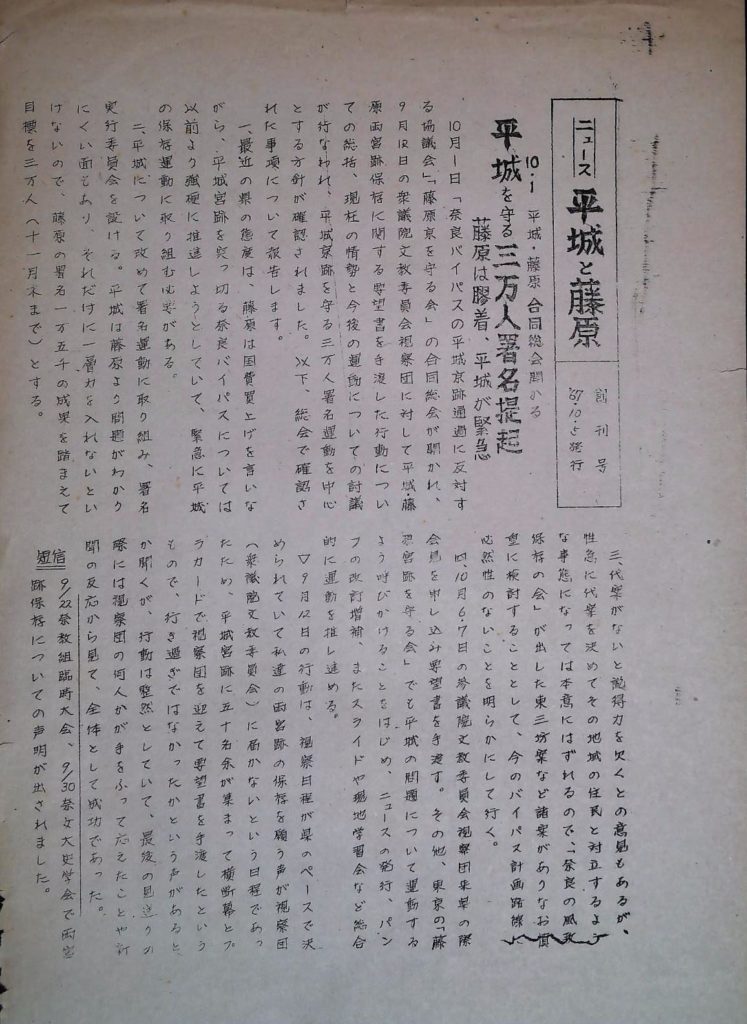 |
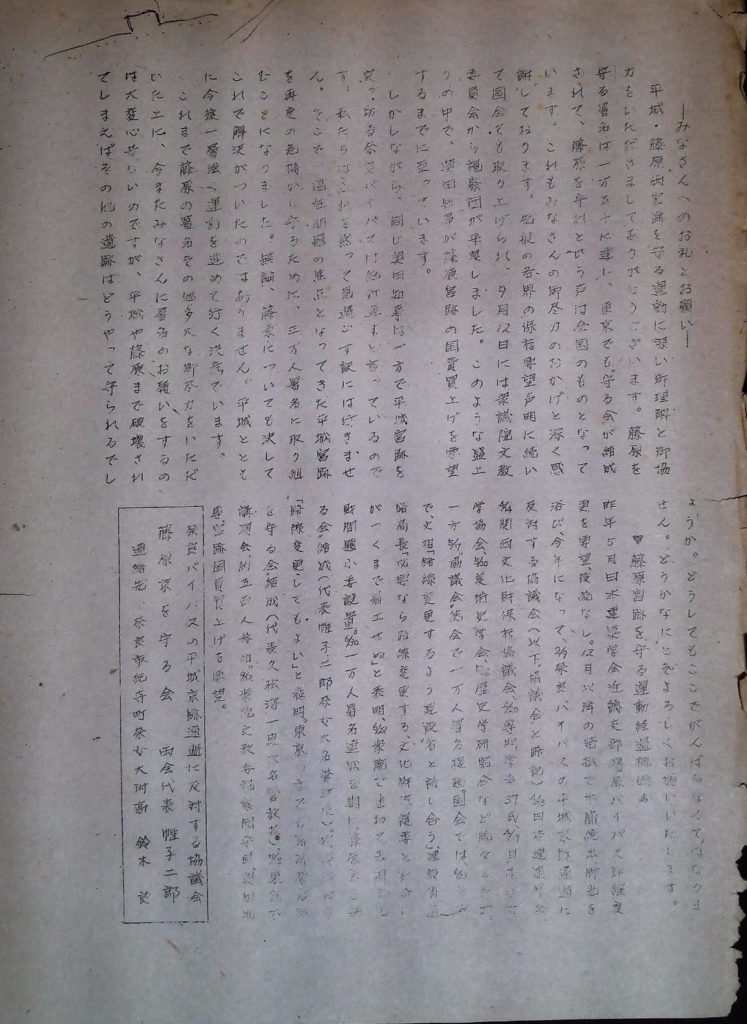 |
| 第2号(19671031) |
 |
止
『ニュース 平城と藤原』(奈良バイパスの平城京跡通過に反対する協議会・藤原京を守る会)
| 創刊号(19671005) |
 |
 |
| 第2号(19671031) |
 |
止
文化財を守る会(宇吹メモ)
| 1967年10月31日 | |
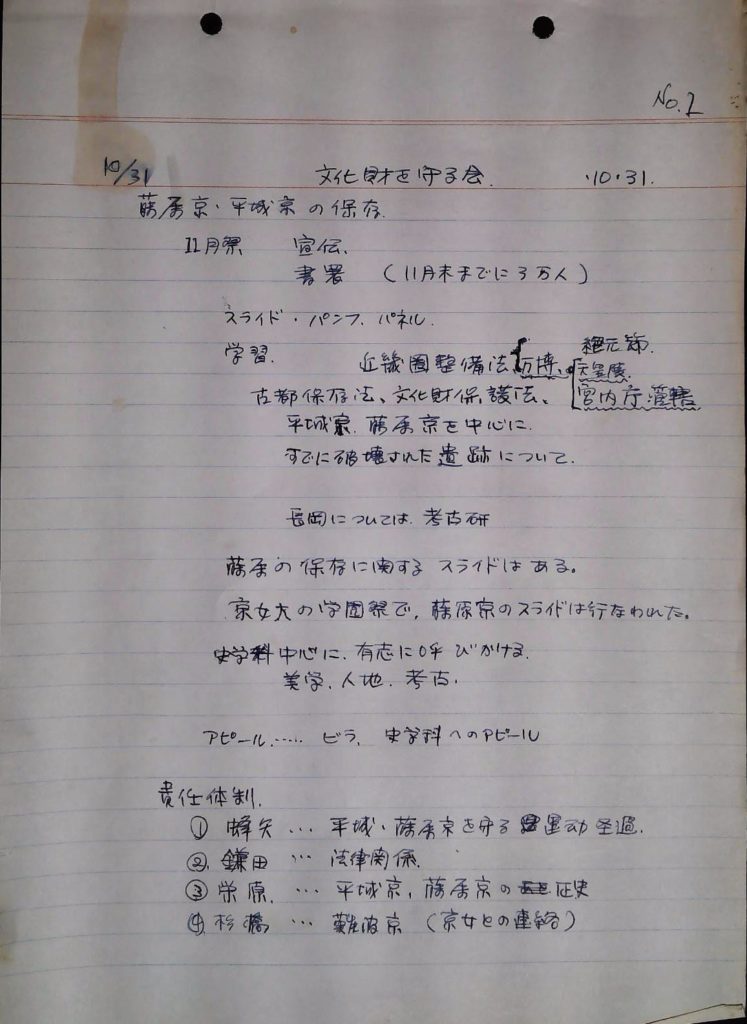 |
|
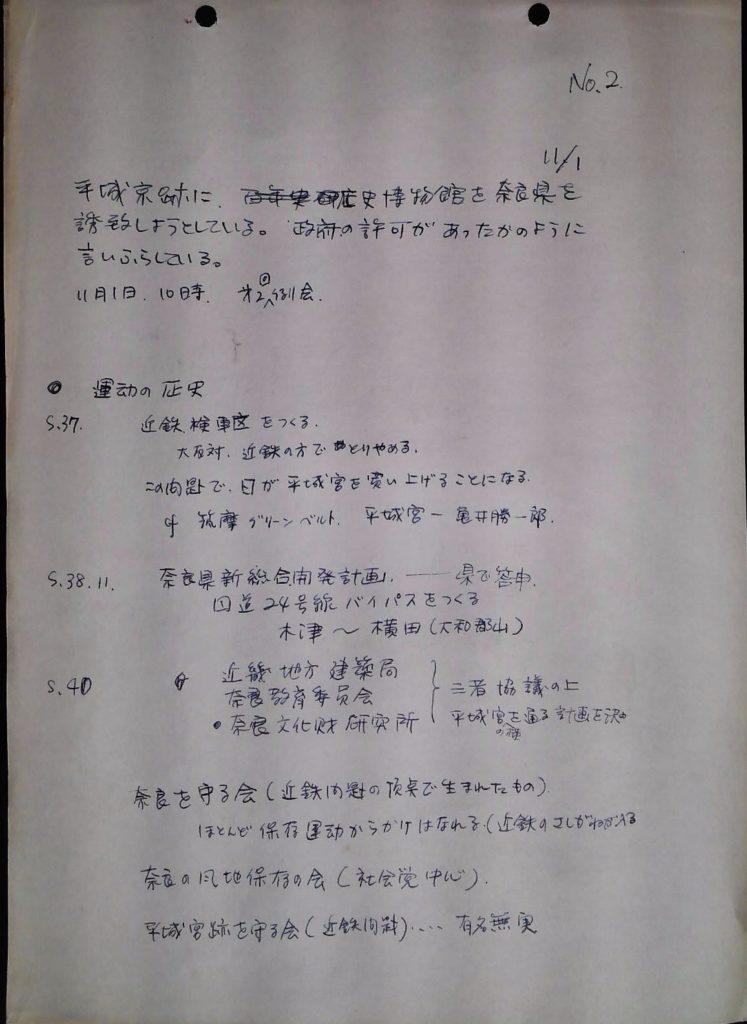 |
|
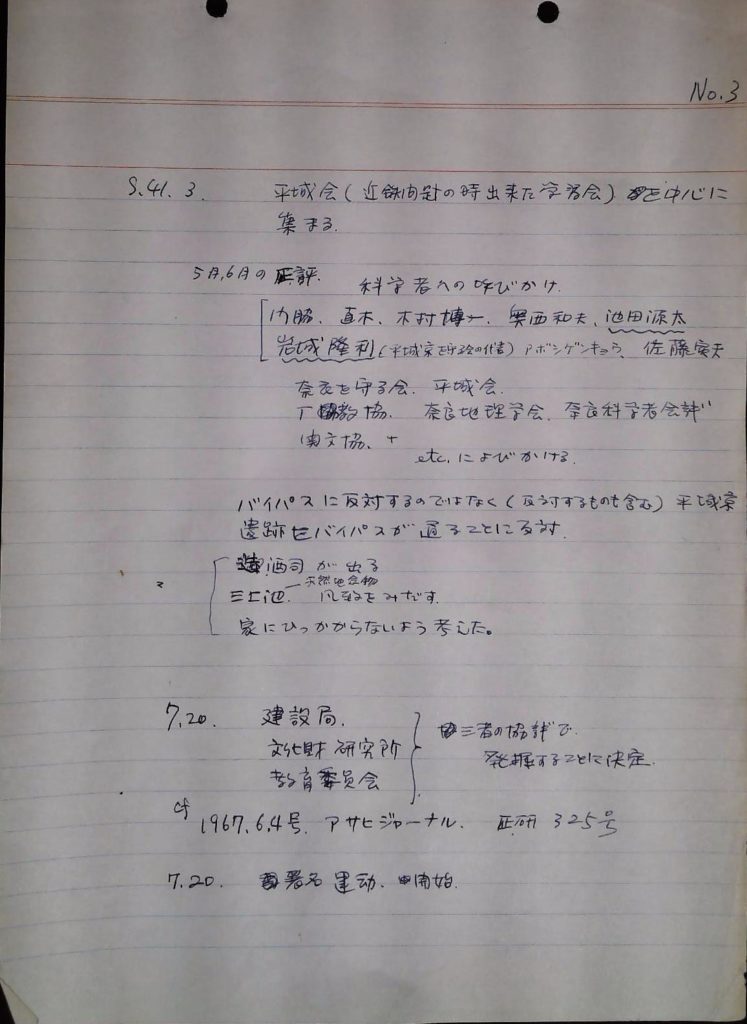 |
|
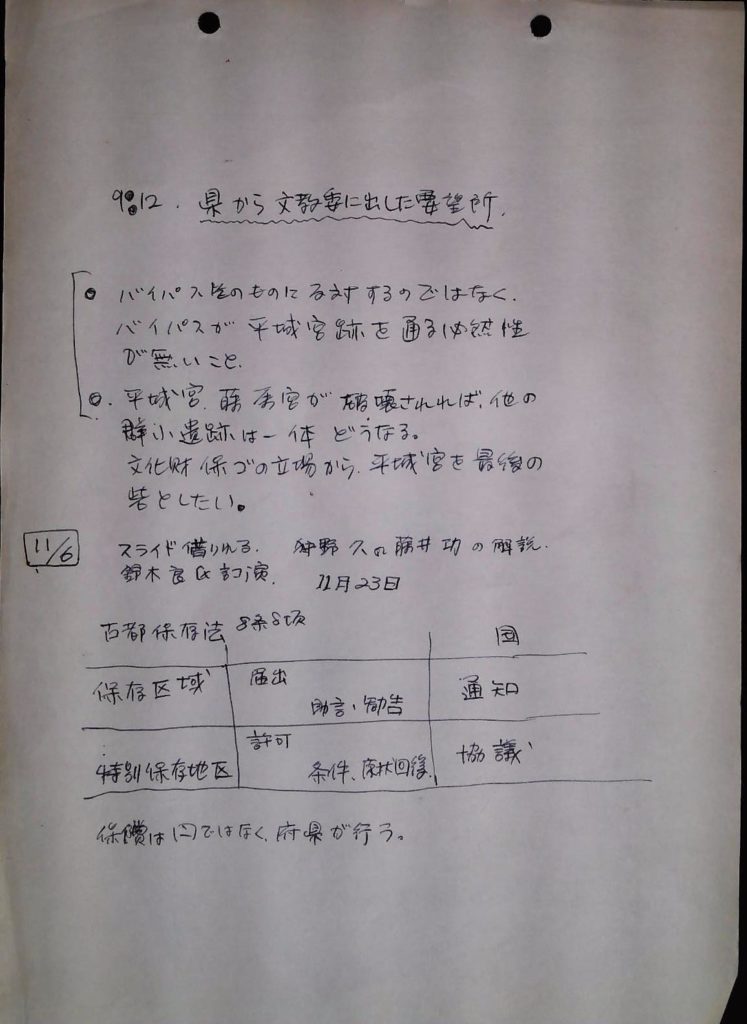 |
|
止
文化財を守る会
『文化財保存 その現状と課題』(文化財を守る会、19671119)
| 表紙 |
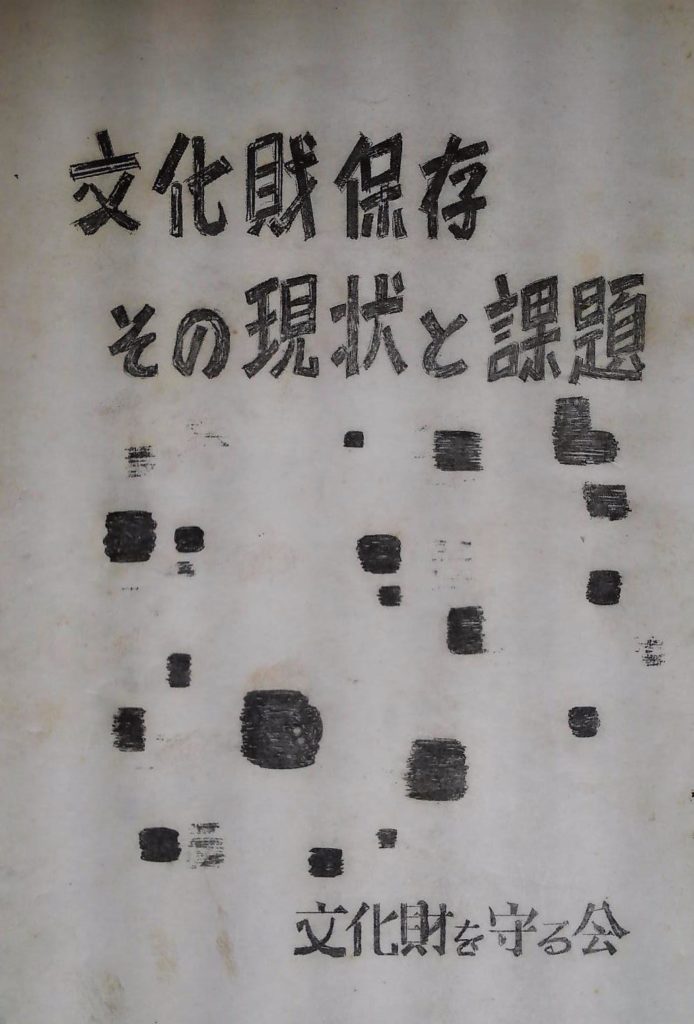 |
| 序にかえて |
| 平城・藤原 両宮跡保存運動経過 |
| 難波宮・藤原宮・平城宮・長岡宮 |
| 難波宮址保存について |
| 長岡京について |
| その他関西の遺跡について |
| 埋蔵文化財保護の問題 |
| 近畿圏整備法と広域整備との関連 |
 |
| スミッコデ参加サセテイタダキマシタ。タノシカッタワ!(SU) |
止
8・6広島学生平和会議(1954年)
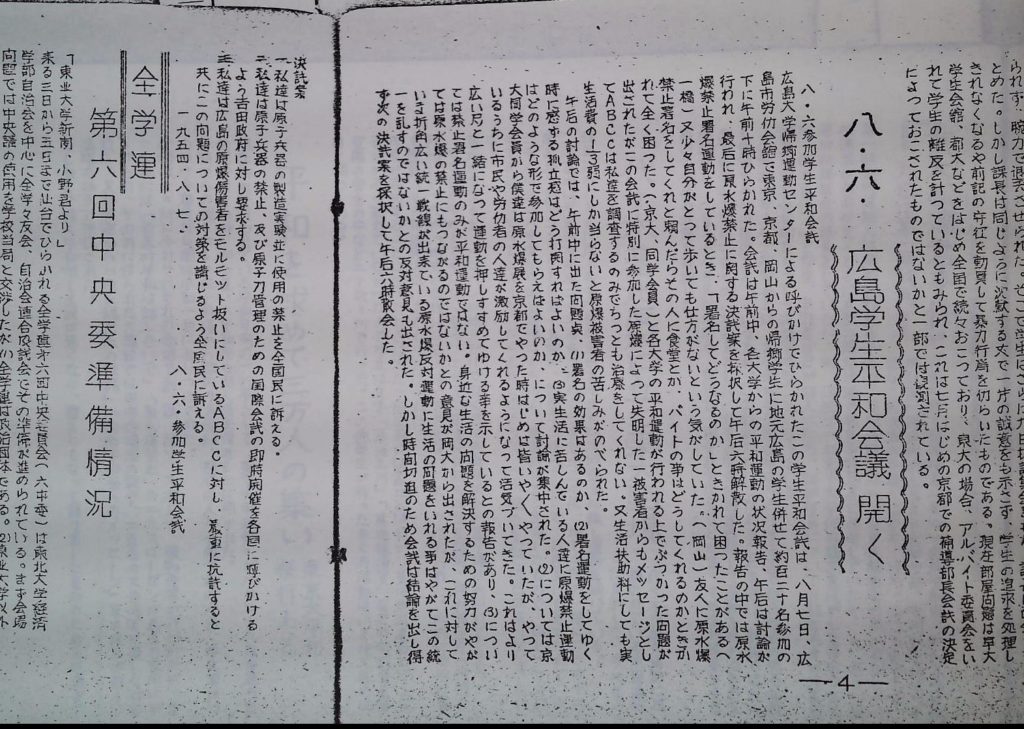 |
| 出典:『連盟通信(全日本学生新聞連盟)180号』(1954.8.15) |
止
連盟通信(全日本学生新聞連盟)ヒロシマ関係記事
| 号 発行年月日 頁 記事見出し |
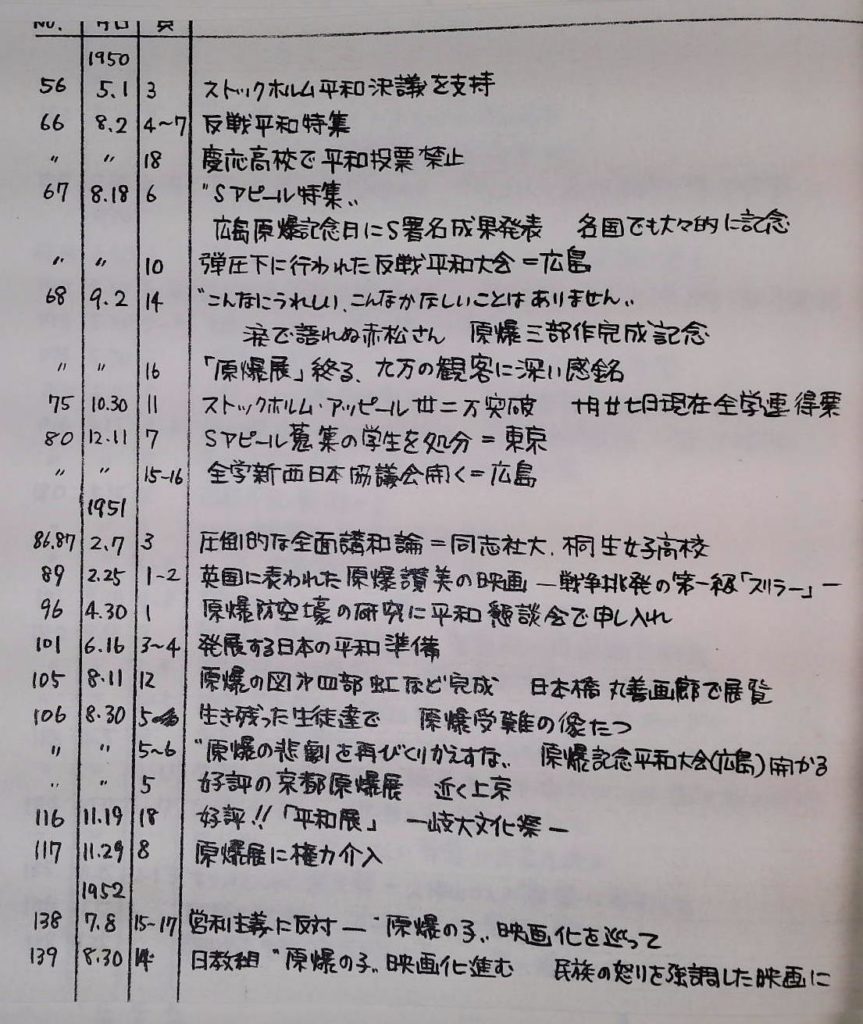 |
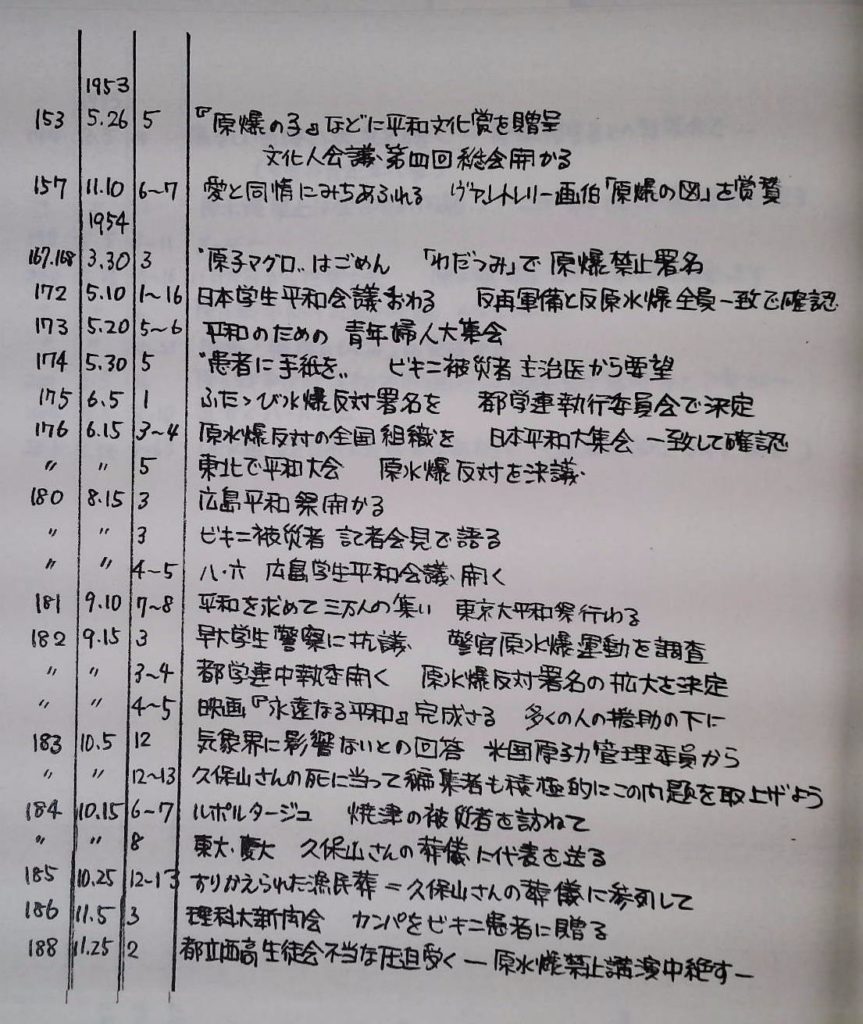 |
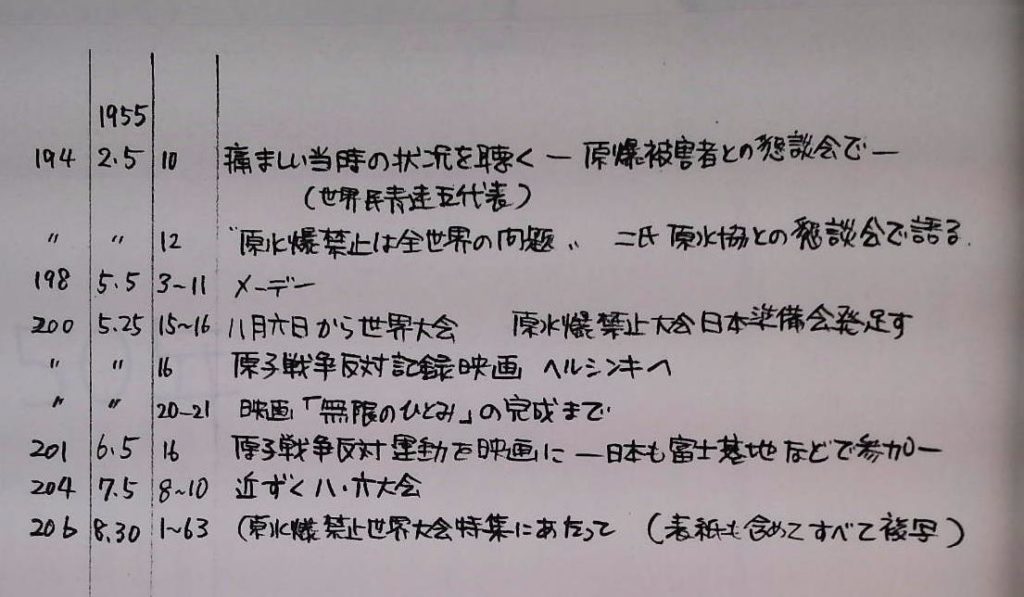 |
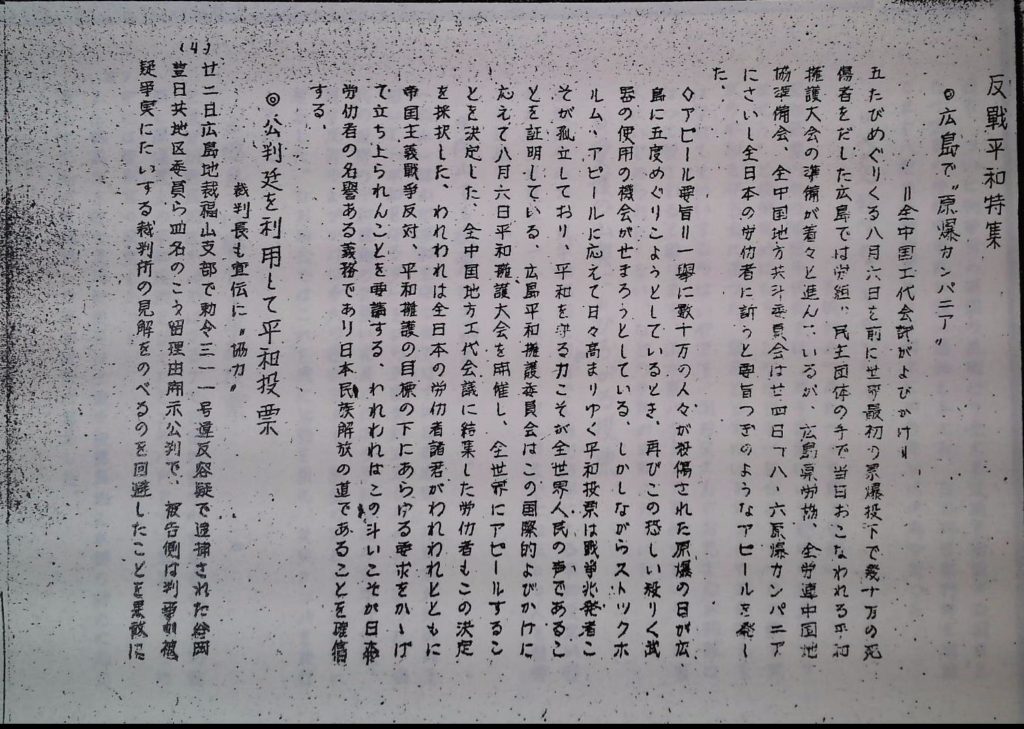 |
 |
止
刀剣(工芸班 線の美術 京大11月祭スライド会)記録
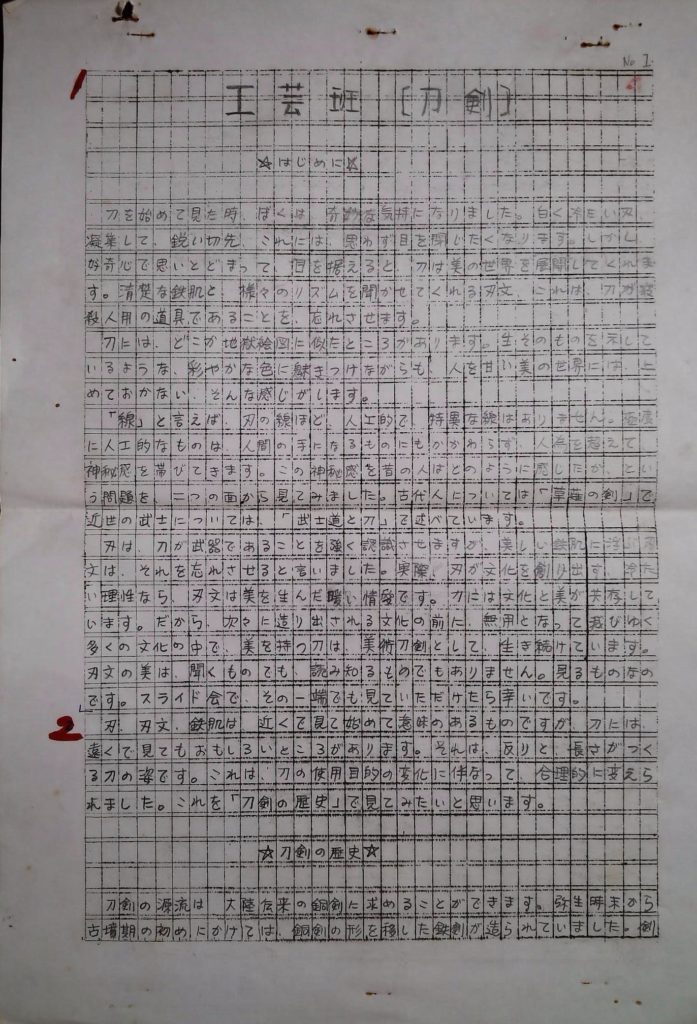 |
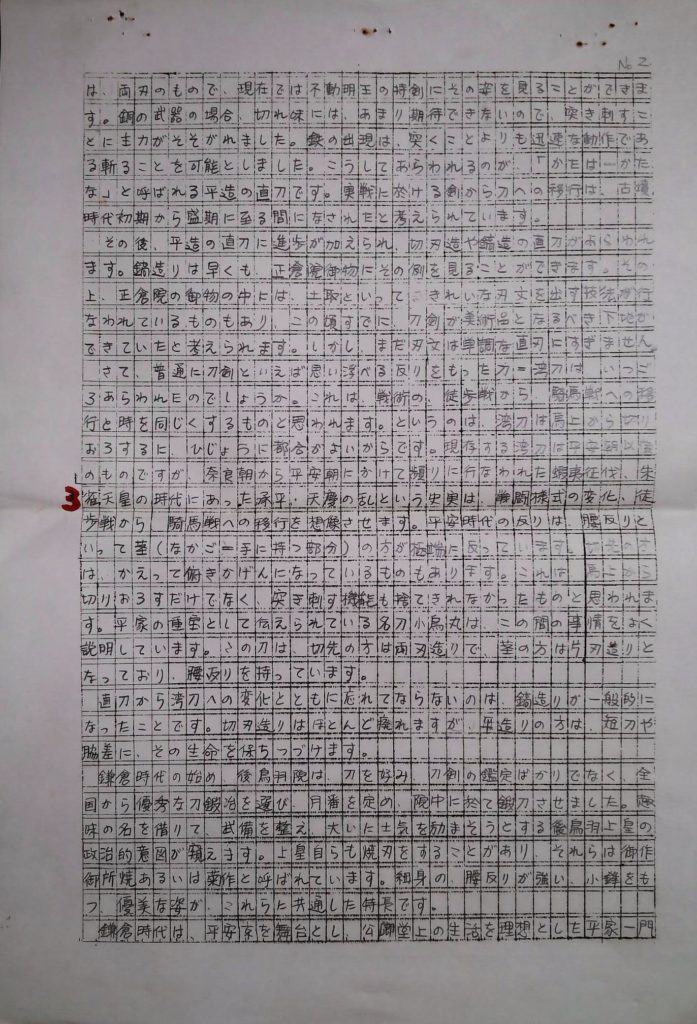 |
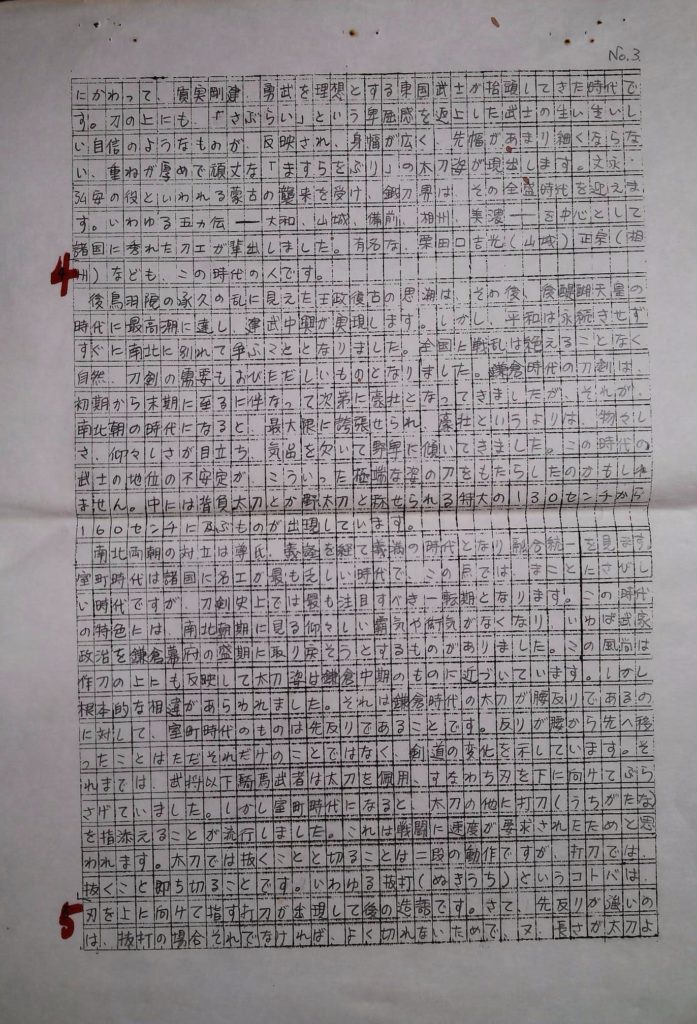 |
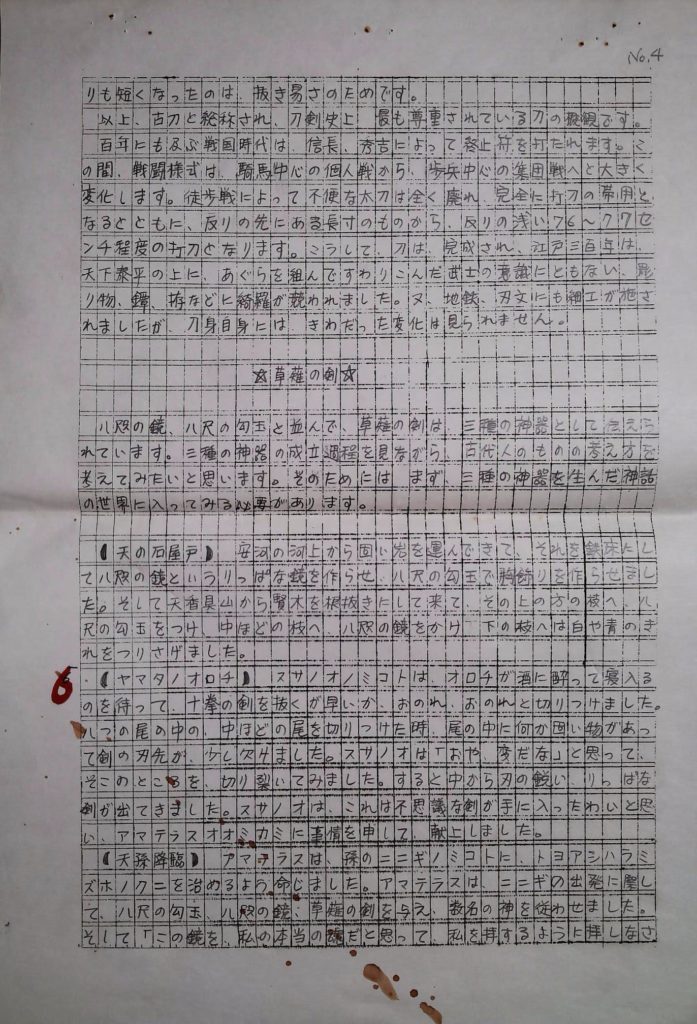 |
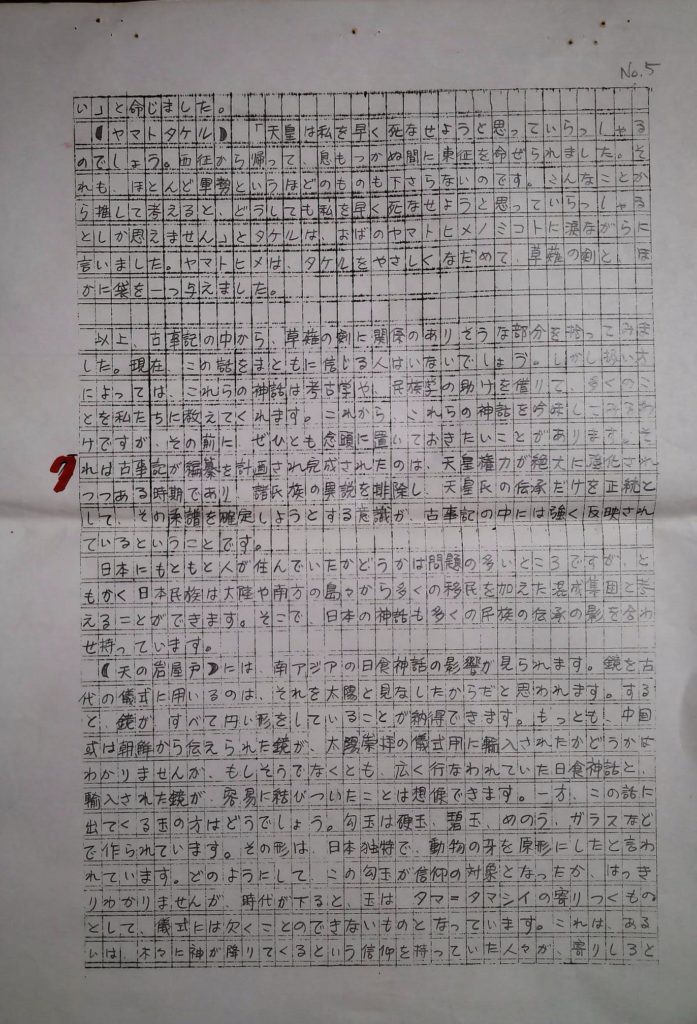 |
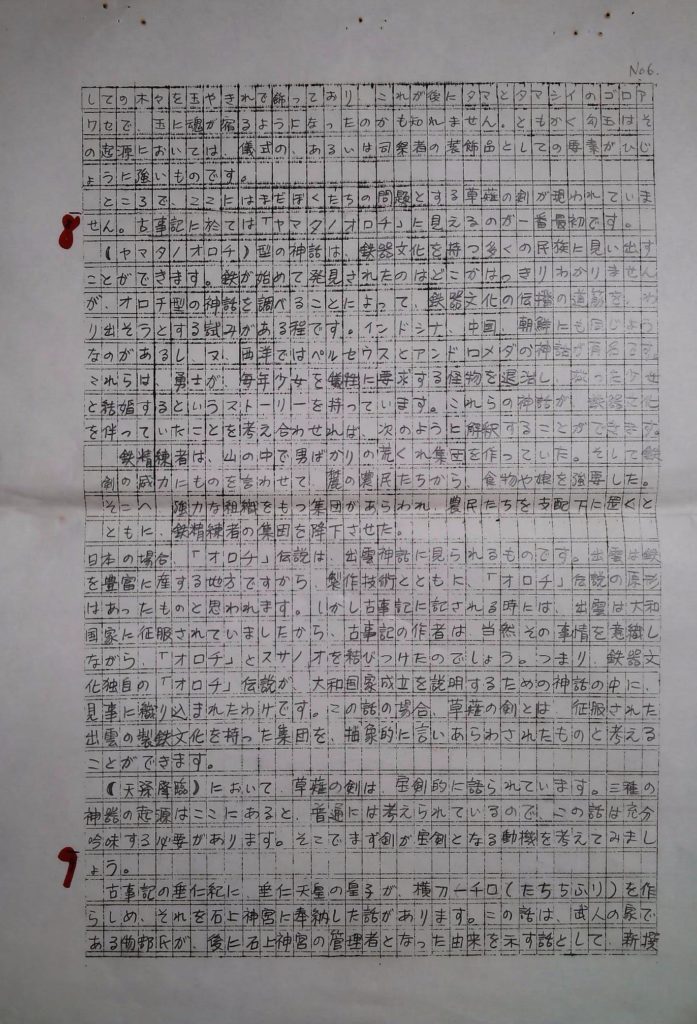 |
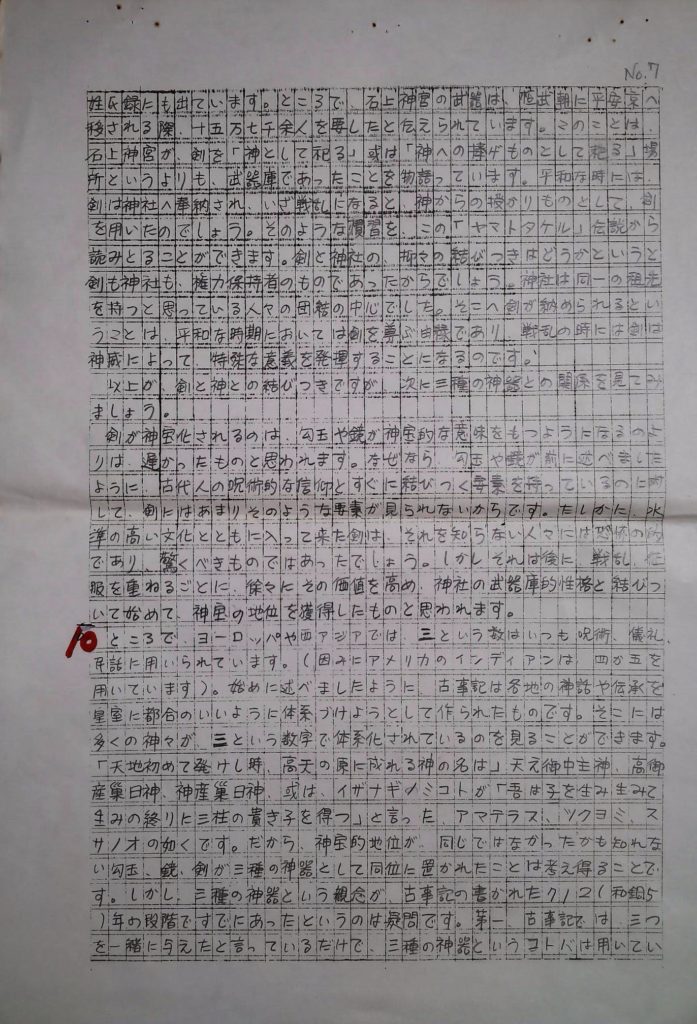 |
 |
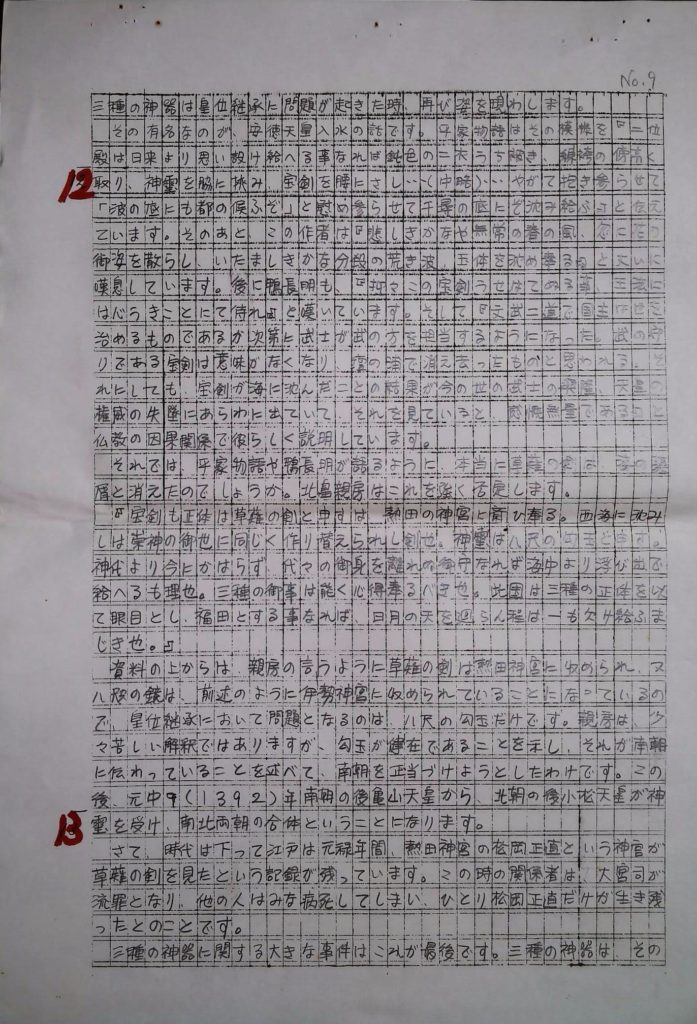 |
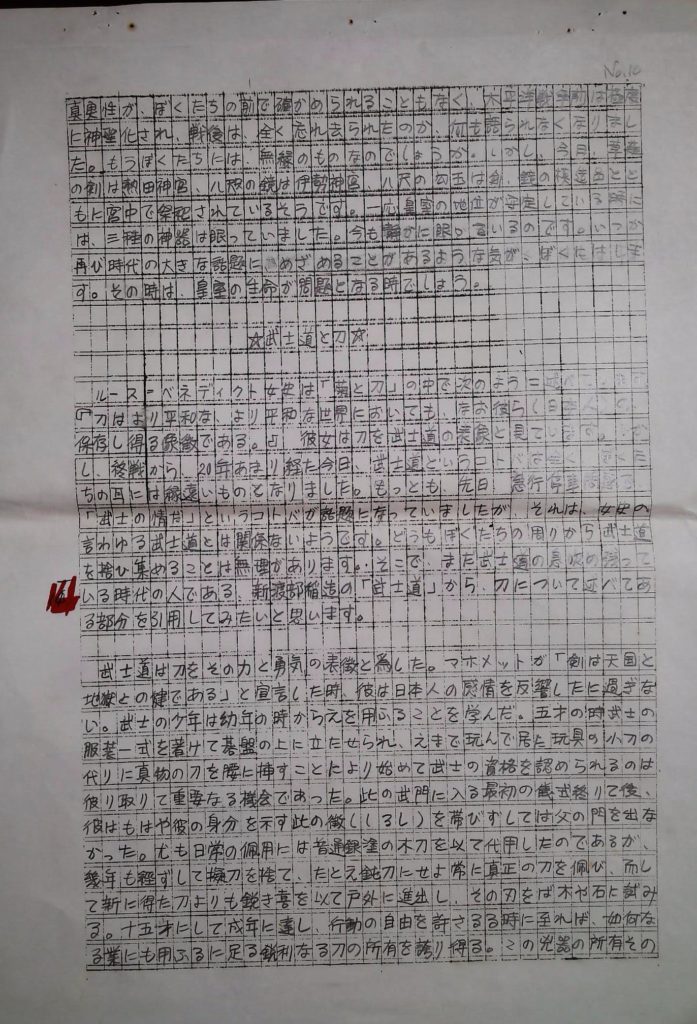 |
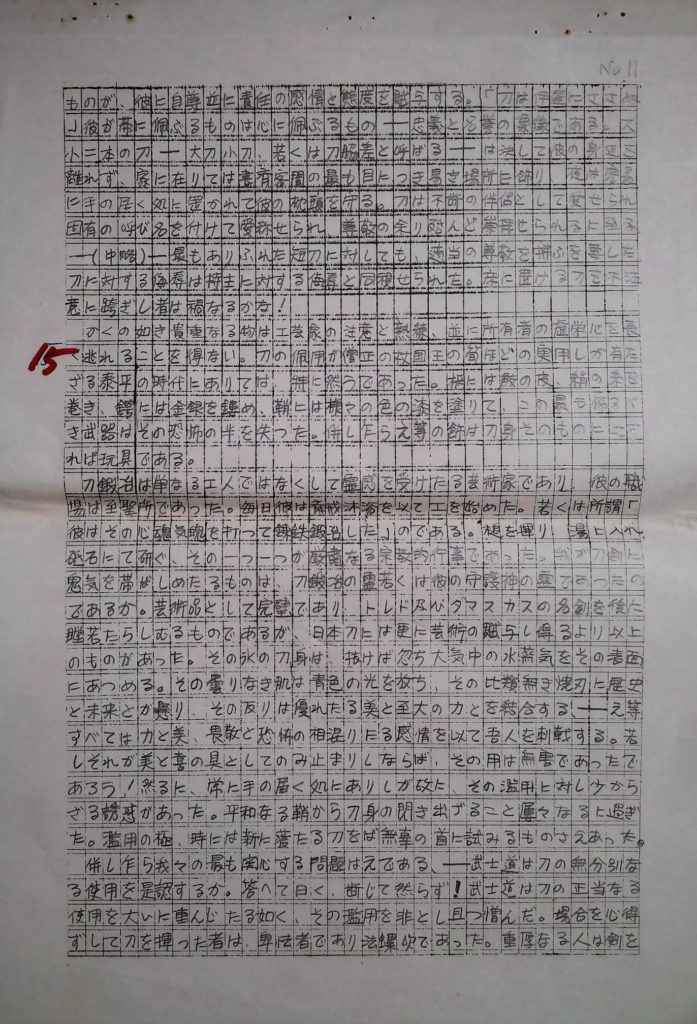 |
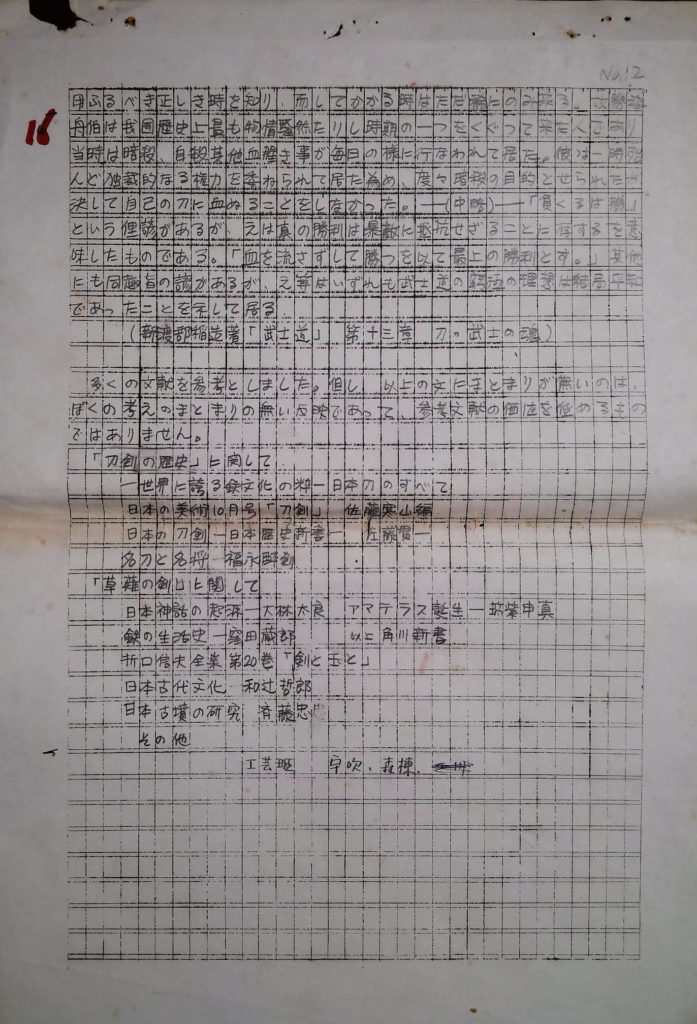 |
止
資料:京都大学美術研究会
| 発行年月日 | 資料名 | 備考 |
| 196507 | しきなす(会誌)2巻2号 | |
 |
||
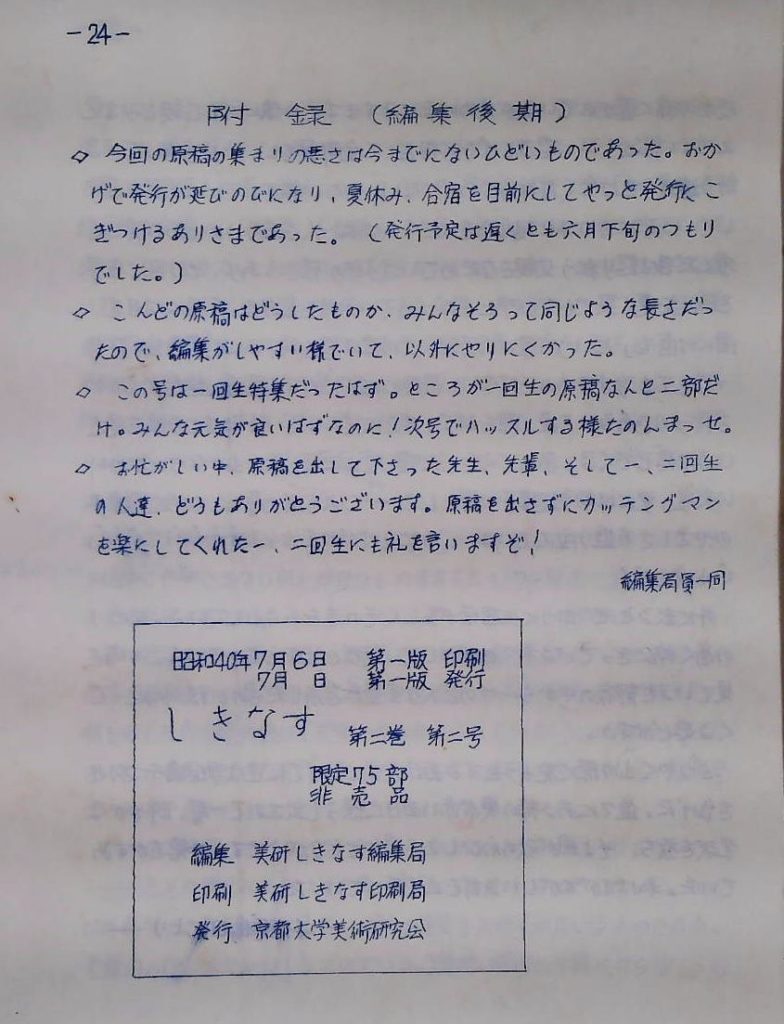 |
||
| 1965 | かまくら 昭和40年度京大美研夏季合宿 | |
| 19651121 | むろまち その美的世界の構成 美研スライド会 65.11.21~22 11月祭参加 | |
| **** | 能面について 1965 11月祭 | |
| 19651211 | しきなす(会誌)2巻3号 室町―その美の究明 | |
| 19651212 | 春日奥山 石仏めぐり 美研12月例会 | |
| 19660228 | しきなす(会誌)3巻1号 | |
| 19660228 | しきなす(会誌)3巻2号 | |
| 19660630 | しきなす(会誌)3巻3号 | |
| 19661101 | 上野照夫「仏像の顔」(京大教養部報第11号) | |
|
|
||
| 196611 | 工芸班(刀剣)準備資料 | |
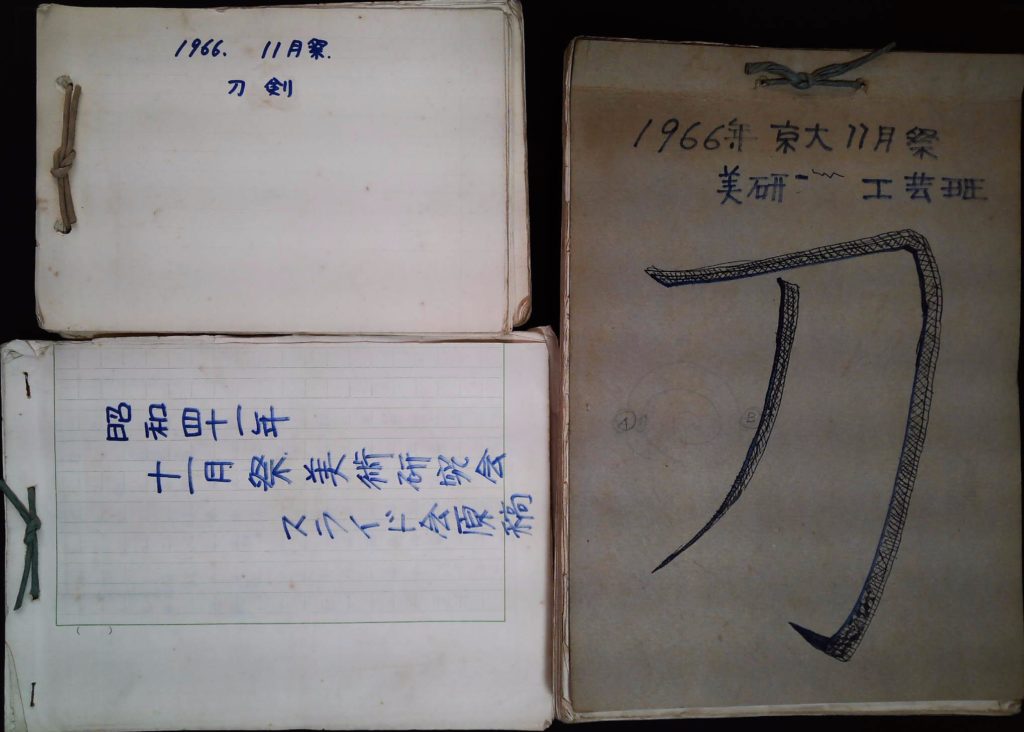 |
||
| 19661120 | 線の芸術 しきなす 特別号 限定200部 | |
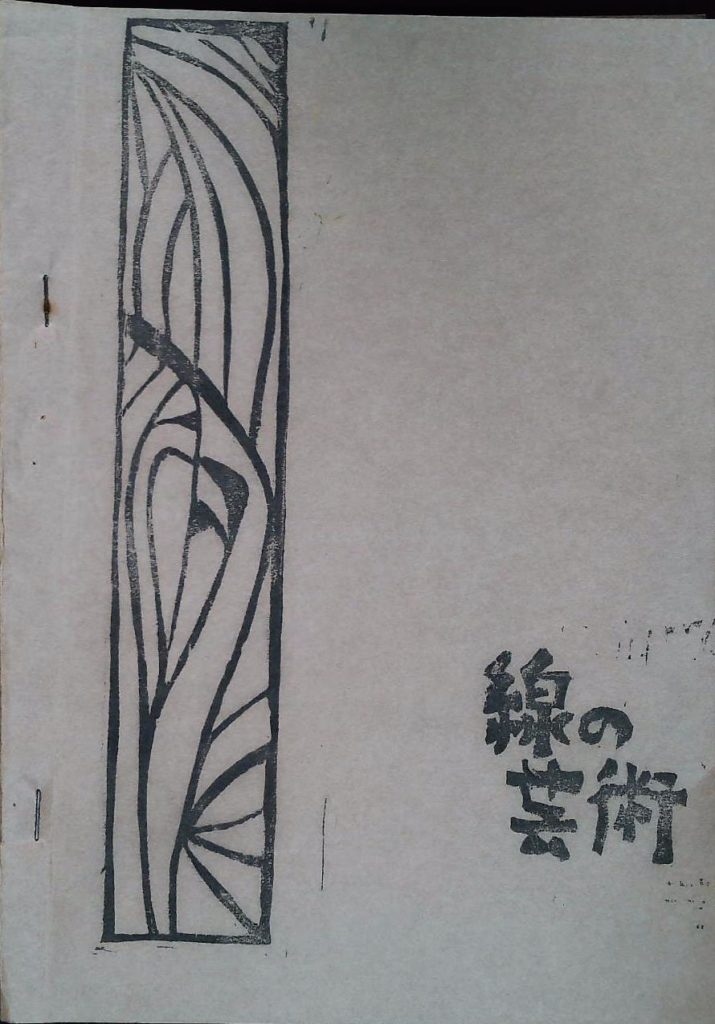 |
||
| 19671119 | 京都大学11月祭参加 奈良(スライド会統一テーマ) 67.11.19~20 | |
止
万葉一日旅行(1967年5月21日)
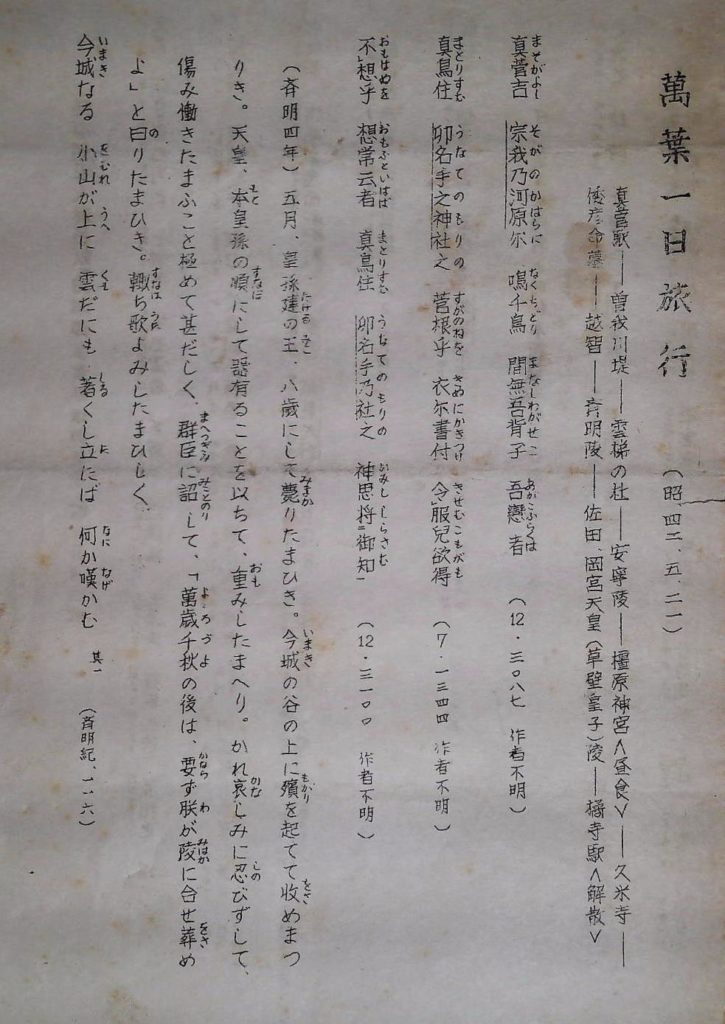 |
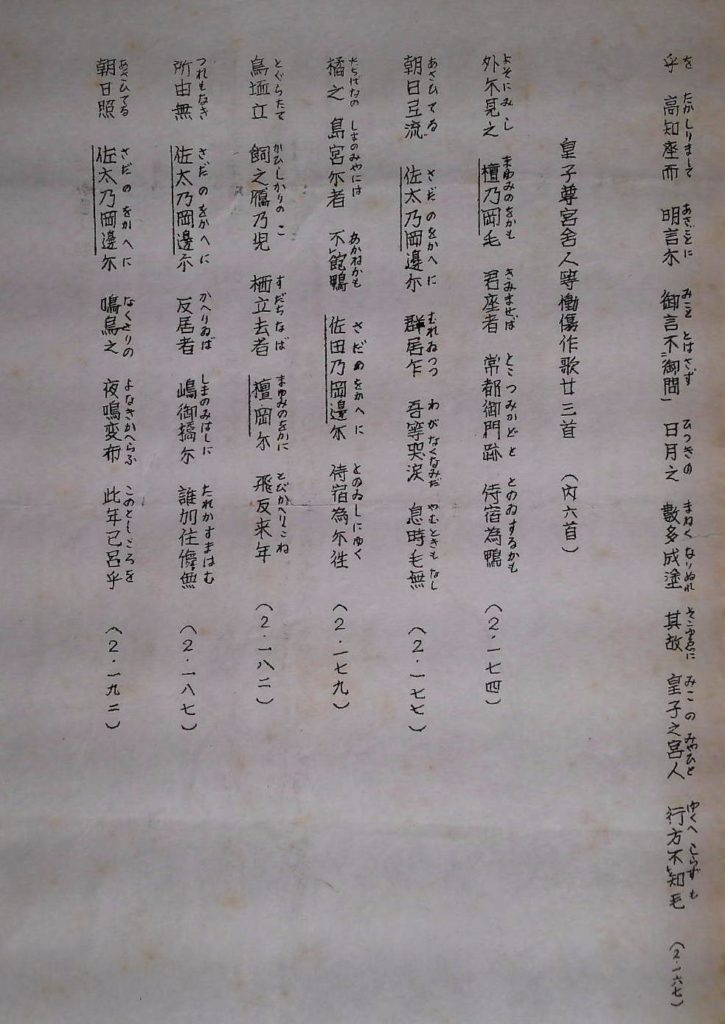 |
 |
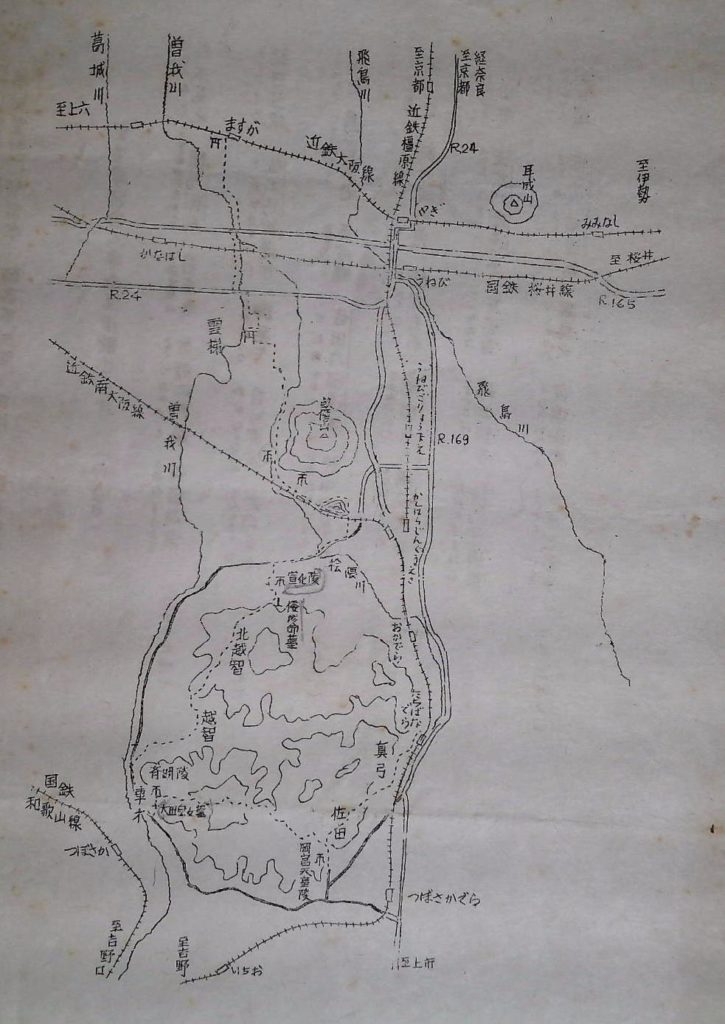 |
止
平城宮跡保存の呼びかけ(1967年9月12日)
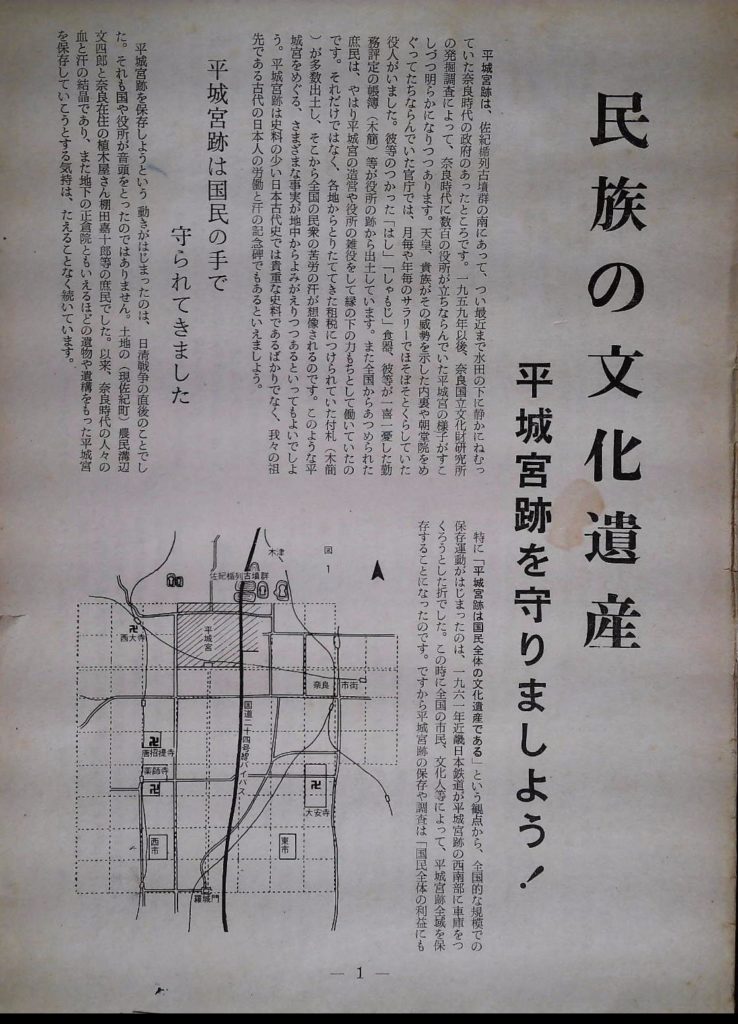 |
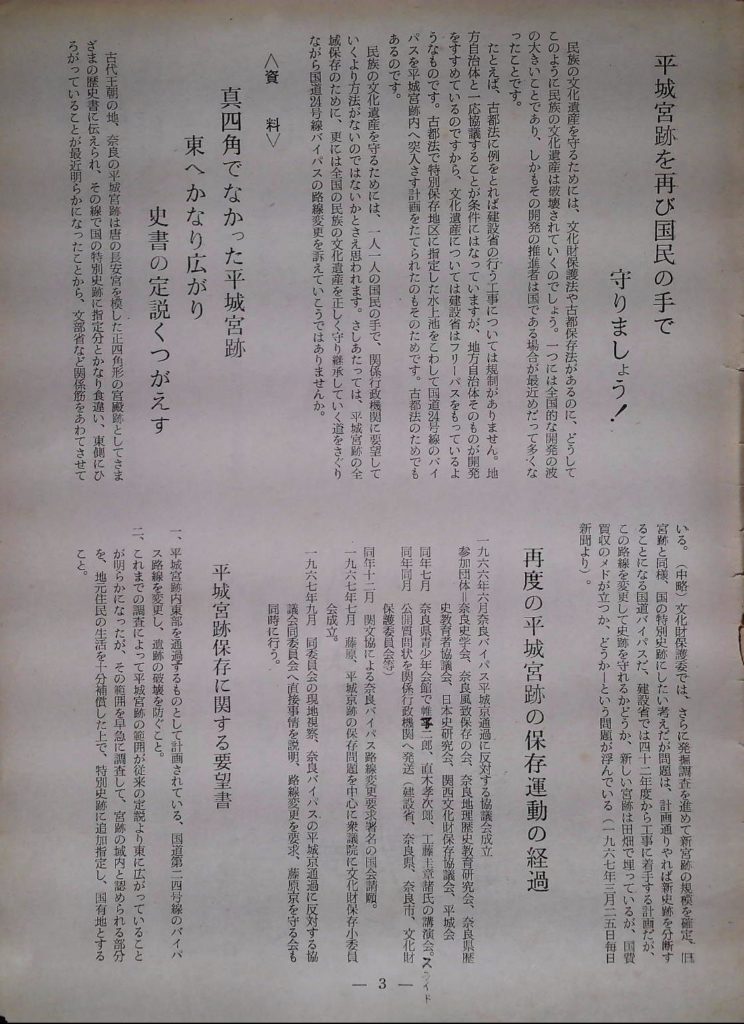 |
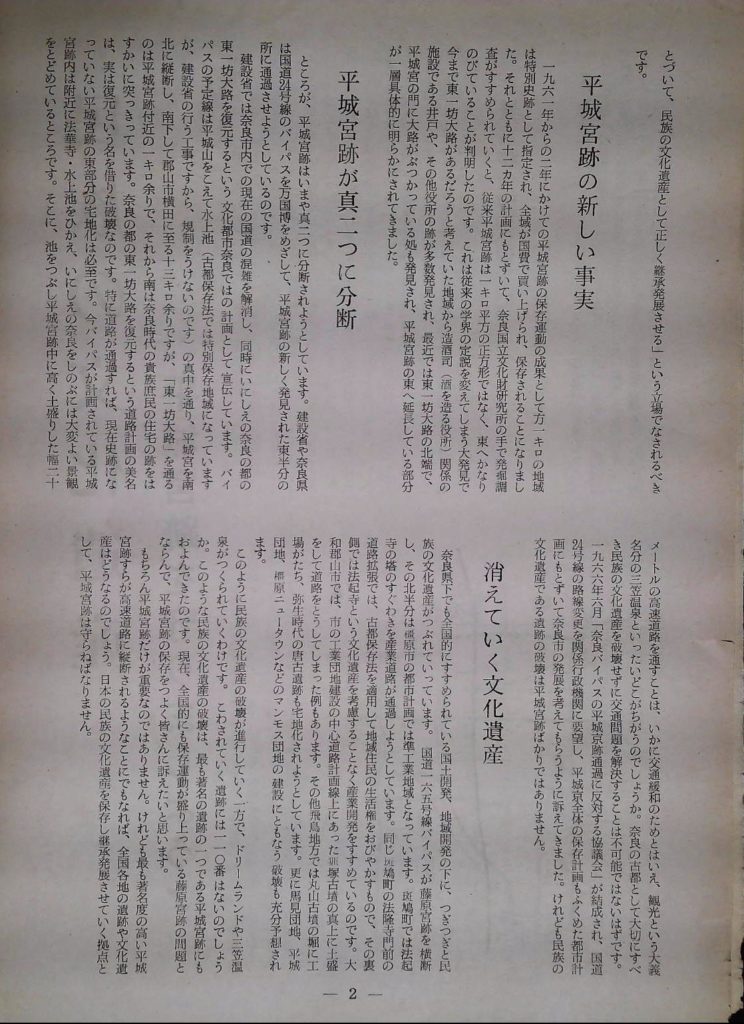 |
 |
止
資料:学生運動<作業中>
| 年月日 | 資料名 | 著者・発行所など | 備考 |
| 1961 | |||
| 1010 | 戦後学生運動史 | 山中明(青木新書) | |
| 1965 | |||
| 03 | 樹々の緑 ’65 | 京都大学同学会 | |
| 0523 | 第20回河上祭 | 京大河上祭実行委員会 | |
| 1217 | 胎動 創刊号 | 京都大学文学部3組 | |
| 2号(1967.1.15) | |||
| 1966 | |||
| 11 | ′66京大第8回11月祭 | ||
| 1110 | 亜寒帯 創刊号 | 『亜寒帯』同人 | |
| 栄原永遠男 | |||
| 1225 | 早稲田をゆるがした150日―早大闘争の記録 | 編集委員会、現代書房 | |
| 1967 | |||
| 0522 | 第21回河上祭 | 京大河上祭実行委員会 | |
| 1001 | 京都大学自衛官入学反対闘争の記録 1964~1967 | 京都大学五者連絡会議 | |
| 1015 | 樹々のみどり 討議資料特集号 | 京都大学同学会中央機関紙、(発行)中央執行委員会 | |
| アメリカのベトナム侵略反対・佐藤内閣の侵略協力反対・小選挙区制粉砕 10.21全国闘争へ | |||
| 1118 | 京都大学第9回11月祭 | 本部実行委員会 | |
| 1968 | |||
| 0410 | 緑の旗Vol.8(広島大学教養部学友会総合機関紙) | ||
| 0530 | 全学連 その行動と理論 | 大野昭男、講談社 | |
| 0731 | 大谷裕追悼文集 | ||
| 1019 | 京都大学第10回11月祭 | 本部実行委員会 | |
| 1020 | 反逆のバリケード―日大闘争の記録 | 日本大学文理学部闘争委員会書記局編、三一書房 | |
| 1969 | |||
| 0115 | 東大紛争の記録 | 東京大学新聞研究所・東大紛争文書研究会、日本評論社 | |
| 0131 | 増補・反逆のバリケード―日大闘争の記録 | 日本大学文理学部闘争委員会書記局編、三一書房 |
|
| 0410 | 砦の上にわれらの世界を―ドキュメント東大闘争 | 東大闘争全学共闘会議、亜紀書房 | |
| 0415 | レポート 揺れる京大 紛争の序章 | 京大問題記録編纂会編、現代教学社 | |
| 0421 | 反逆への招待 | 京都大学出版会 | |
| 0507 | 討議資料 文学部の民主的変革のために―政府の大学自治破壊攻撃と斗うなかで | 文学研究科大学院生協協議会・文学部全学連支持委員会 | |
| 0513 | 嵐の中に育つわれら―東大闘争の記録 | 日本民主青年同盟東大全学委員会編、日本青年出版社 | |
| 0520 | 東大闘争 その事実と論理 | 井上清、現代評論社 | |
| 0615 | 京大闘争 京大神話の崩壊 | 京大新聞社編・京大全共闘協力、三一書房 | |
| 0615 | 知性の反乱 東大解体まで | 山本義隆、前衛社 | |
| 0720 | 大学政策・大学問題 その資料と解説 | 野村平爾・五十嵐顕・深山正光編、労働旬報社 | |
| 0817 | ザ・ロンゲスト・デー 広大封鎖解除機動隊奮戦記 | 広島県警察機動隊編、日刊労働通信社 | |
| 0910 | 尚志 第64号(「広島大学紛争」) | 尚志 | |
| 1971 | |||
| 0301 | 革命的暴力とは何か? | 全学連中央執行委員会情宣部編、こぶし書房 | |
| 0815 | 入管体制資料集 | 東大法共闘編、亜紀書房 | |
| 1972 | |||
| 1201 | 過激派集団 | 公安資料調査会、 | |
| 1974 | |||
| 0210 | フェニックスの苦闘 60年代末における広島大学学園闘争ノート | 近藤純一 | |
| 0628 | 法政大学新聞縮刷版(1)(1929~1955) | 法政大学新聞学会 | |
| 1976 | |||
| 1030 | 南朝鮮学生闘争史 | 高峻石、社会評論社 | |
| 1982 | |||
| 1025 | 広島県大百科事典下巻(「広島大学学園紛争」執筆:松元寛) | 中国新聞社 | |
| 1990 | |||
| 0427 | 権力にアカンベエ! 京都大学新聞の65年 | 京大新聞史編集委員会編、草思社 | |
| 1994 | |||
| 0825 | 全共闘白書 | 全共闘白書編集委員会、新潮社 | |
止